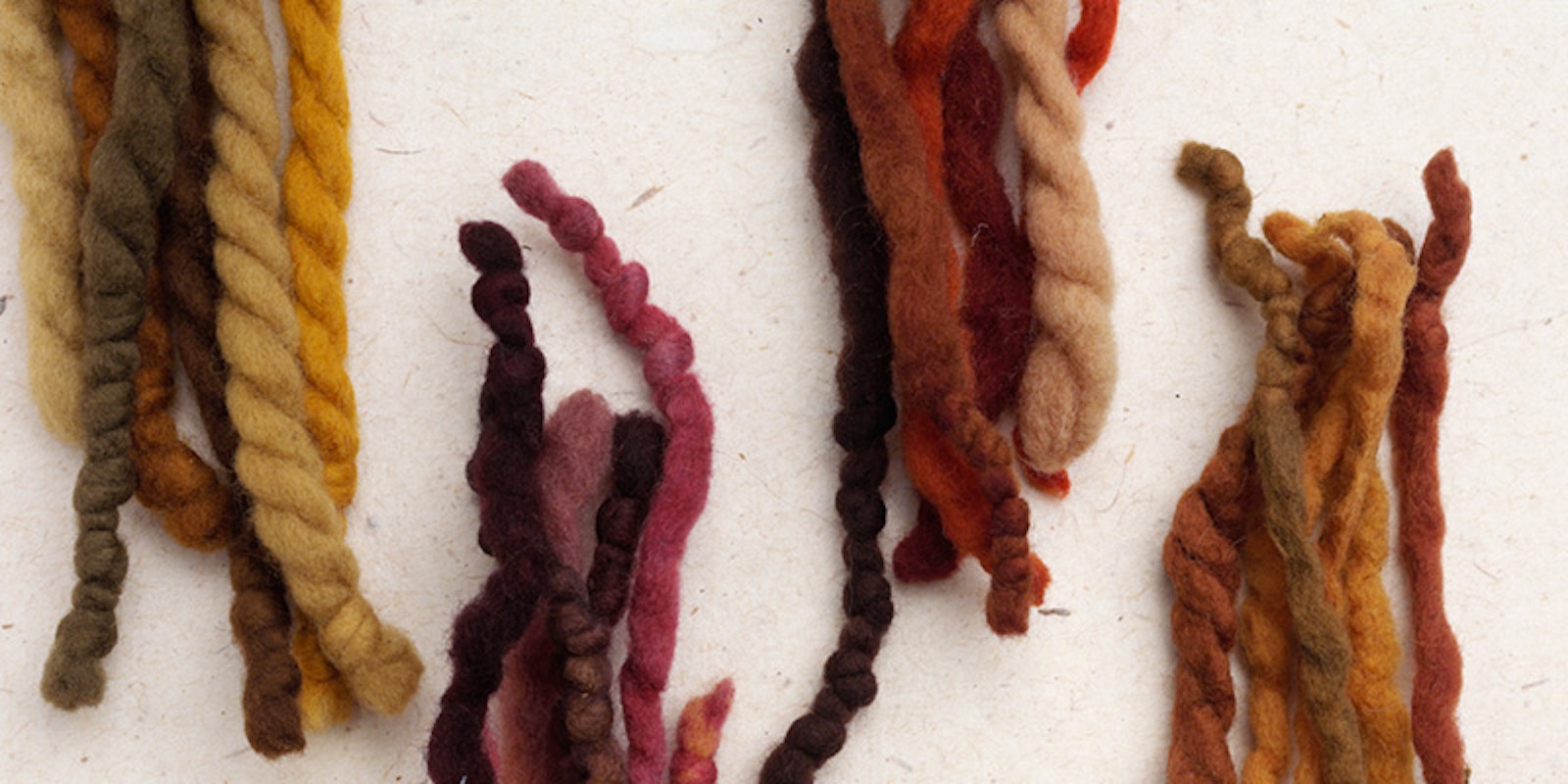Happy National Mushroom Month! According to the Mushroom Council, people harvest mushrooms on every continent. But fungi offer more than just a nonfat food full of potassium and B vitamins—you can dye with mushrooms, too! Add different mordants to the mix, and you've got a rainbow of earthy hues. You may need to look farther than your local rotting stump for truly striking color, but even chanterelles and oyster mushrooms can yield yellow and green.
Artist Miriam C. Rice deserves the credit for bringing mushroom dyes to the attention of modern dyers. Although she passed away in 2010, her work continues to inspire. Carol Lee, author of the book Mushrooms Are to Dye For, talked with Jessica Gates about what makes dyeing with mushrooms perfect for both newer and more experienced dyers.
These yarns were dyed with Cortinarius semisanguineus, combined with a variety of mordants. Photos by Joe Coca.
1. Mushrooms provide a nearly endless variety of hues.
Many mushrooms produce variations of beige, but some yield unexpected colors such as red, orange, and purple. To find out if a mushroom contains color, Carol advises just testing it by rubbing it on a piece of paper. The local environment and stage of development influence the color and amount of dye a mushroom produces.
2. Mushrooms offer flexibility.
Collect mushrooms and either dye with them right away or store them for later by freezing or drying. The method you use will influence the outcome of the color.
3. Mushrooms make dyeing easy.
Some mushrooms produce dye by just adding water, but some require alkali (such as ammonia), acid (such as vinegar), or alcohol to develop. Add enough water to cover the mushrooms and fiber, using more water for dried mushrooms and less for fresh and frozen. Carol cautions not to add too much water, because that will result in dull colors.
4. Mushroom dyes resist fading.
Many mushrooms create a permanent dye on their own, but for best results, mordant your fiber first. Mordants such as alum and iron can change the color and make it more lightfast and washfast.
5. You’ll never run out of mushrooms to try.
With about 38,000 known species, mushrooms grow just about everywhere. Find a good mushroom guidebook to help you identify types. Explore local varieties as a starting point, then branch out and gather different mushrooms while traveling.
Carol Lee, author of Mushrooms Are to Dye For, writes notes about where she found the Cortinarius cinnamomeus that produced these yellow-orange hues.
Learn more about natural dyeing. To help you learn, Carol suggests taking good notes about the location where you find mushrooms and photographing them before harvesting. Once you start dyeing, sample, sample, and sample some more. Experimenting with mushroom dye yields unexpected results, and that's the best part!
Elizabeth Prose
Jessica’s interview with Carol Lee appeared in the 2012 issue ofColorways, an interactive digital magazine that is no longer available for sale.



